Weimar Republic coins price guide
Total added coins: 521
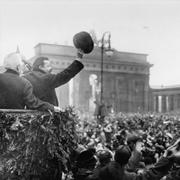
 Commemorative
CommemorativePrices of coins of Weimar Republic
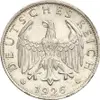
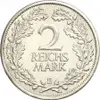

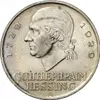


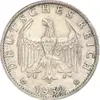
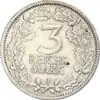

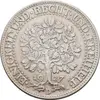


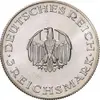


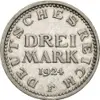







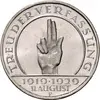





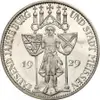




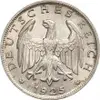
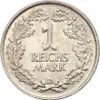
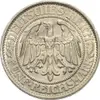




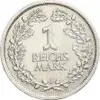

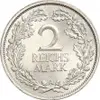

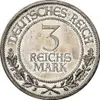

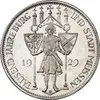




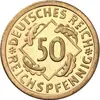







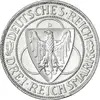




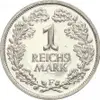




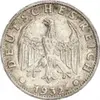
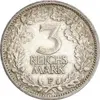
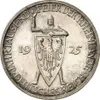
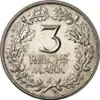



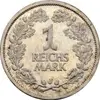




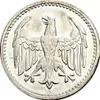
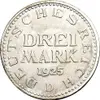

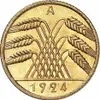

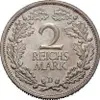

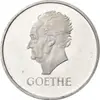

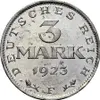
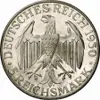
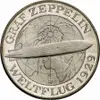
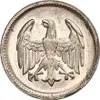

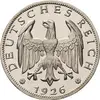
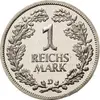
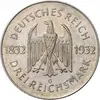

Coins of the Weimar Republic
Historical review of Weimar Republic
On November 9, 1918, Philipp Scheidemann declared German monarchy to have collapsed and proclaimed the Weimar Republic. However, it had bad luck from the very beginning. High reparations, widespread dissatisfaction and political disturbances seriously affected the new-born republic. Soon after, hyperinflation the world had never experienced before broke out. Its peak was reached in 1923 when prices reached astronomic levels.
• One egg cost 320 billion marks.
• 1 liter of milk could be bought for 360 billion marks.
• One couldn’t get 1 kilo of potatoes cheaper than for 90 billion marks.
• 1 tram ride would cost 50 billion marks.
• And 1 US dollar was equal to an incredible amount of 4.21 trillion marks.
This vicious circle was broken only in 1923 when the rentenmark was introduced. The new currency was backed by a mortgage on national industrial and agricultural resources, hence its name «Rentenmark» (Rente is a German term for mortgage).
Initially, the introduction of the rentenmark stabilized economics to some extent. But another disaster — the global financial crisis — was approaching and broke out in the 1920s. In October 1929, a speculative bubble burst on the New York Stock Exchange and caused the stock market crash that went down in history as «Black Friday». Global consequences were devastating and caused mass unemployment, deflation, sharp drop in production, series of bankruptcies, social suffering and political crises. Germany was particularly affected and provided an ideal breeding ground for radical powers. Open hostilities and assassinations between elements of the extreme right wing and elements of the left wing were the order of the day.
Right-wing extremist Adolf Hitler made a breakthrough at elections and finally took over the power in 1933, bringing the Weimar Republic to an end.
Coins of Weimar Republic:
The first coin of the Weimar Republic was 50-pfennigs coin minted between 1919 and 1922. Then 3-marks coin followed in 1922. In both cases, coins were made of cheap aluminum. Due to strong inflation, these coins lost almost the entire value soon after they had been issued. In 1923, another attempt was made to mint 200- and 500-marks coins made of aluminum as well. However, the inflation acted faster than coin presses, and by the time they were introduced, these coins were worth just a few pfennigs. This galloping inflation was brought under control only in 1923 when the rentenmark was introduced.
In 1923 and 1924, coins with the value or 1, 2, 5, 10 and 50 rentenpfennigs were minted, and in 1924 and 1925 — also 1 and 3-marks coins with a silver content of 500/1000.
After the introduction of the reichsmark, 1, 2, 5, 10 (until 1936) and 50-pfennig coins (until 1938) were minted again. Coins with higher value — 1, 2, 3 and 5 reichsmarks (RM) — also had a silver content of 500/1000 and were minted in the following periods:
- 1 reichsmark (1925-1927)
- 2 reichsmarks (1925-1931)
- 3 reichsmarks (1931-1933)
- 5 reichsmarks (1927-1933)
A peculiarity was the 4-reichspfennigs coin of 1932 that was used in a naive attempt to counteract deflation. There were hopes that prices would be reduced by 20% and, in case of success, there were even plans to introduce an 80-pfennigs coin. However, the German population did not accept 4 reichspfennigs and gave it a nickname of «Brüning-Taler» (taler of Heinrich Brüning) deriving from the name of the Reich’s Chancellor of that time. The newspaper «Berliner Zeitung» even held a contest to find the most original name for the coin, and there were some amusing suggestions like «Poor Heinrich», «Heinrich’s Taler», «Emergency Kreuzer», «Crash Groschen», «Proletarian Dollar» and «Life-saving Medal» and it is just to name some of them. So, the so-called Vierer, or the four, was taken out of circulation just one year after its introduction.
Another special feature of the period was numerous commemorative coins made of silver 500/1000:
- 3 and 5 reichsmarks, 1925, A-J, «For the Millennium Celebration of the Rhineland» (Zur Jahrtausendfeier der Rheinlande);
- 3 reichsmarks, 1926, A, «For the 700th Anniversary of the Imperial City of Lübeck» (700-Jahrfeier Reichsstadt Lübeck);
- 3 and 5 reichsmarks, 1927, A, «100th Anniversary of Bremerhaven» (100-Jahrfeier Bremerhaven);
- 3 reichsmarks, 1927, A, «Millennium Celebration of Nordhausen» (Jahrtausendfeier Nordhausen);
- 3 and 5 reichsmarks, 1927, F, «450th Anniversary of Tubingen University» (450-Jahrfeier Universität Tübingen);
- 3 reichsmarks, 1927, A, «400th Anniversary of Marburg University» (400-Jahrfeier Universität Marburg);
- 3 reichsmarks, 1928, D, «On the 400th anniversary of Albrecht Dürer’s Death» (Zum 400. Todestag von Albrecht Dürer);
- 3 reichsmarks, 1928, A, «900th Anniversary of Naumburg an der Saale» (900-JahrfeierNaumburg an der Saale);
- 3 reichsmarks, 1928, D, «1000th Anniversary of Dinkelsbühl» (1000-Jahrfeier Dinkelsbühl);
- 3 and 5 reichsmarks, 1929, A-J, «On the 200th Birthday of Gotthold Ephraim Lessing» (Zum 200. Geburtstag von Gotthold Ephraim Lessing);
- 3 reichsmarks, 1929, A, «Waldeck-Prussia Union» (Waldeck vereinigt mit Preußen);
- 3 and 5 reichsmarks, 1929, E, «1000 years of the castle and city of Meissen» (1000 Jahre Burg und Stadt Meißen);
- 3 and 5 reichsmarks, 1929, A-J, «10th Anniversary of the Weimar Constitution» (Zum 10 Jahrestag der Weimarer Reichsverfassung);
- 3 and 5 reichsmarks, 1930, A-J, «World flight of the Graf Zeppelin airship 1929» (Zum Weltflug des Luftschiffs «Graf Zeppelin» 1929);
- 3 reichsmarks, 1930, A-J, «700th anniversary of the death of Walther von der Vogelweide» (Zum 700. Todestag von Walther von der Vogelweide);
- 3 and 5 reichsmarks, 1930, A-J, «Evacuation of Rhineland» (Zur Räumung des Rheinlands);
- 3 reichsmarks, 1931, A, «300 years of the Magdeburg fire» (Vor 300. Jahren Stadtbrand von Magdeburg);
- 3 reichsmarks, 1931, A, «On the 100th Anniversary of Heinrich vom Stein’s death» (Zum 100. Todestag des Freiherrn von Stein);
- 3 and 5 reichsmarks, 1932, A-J, «On the 100th anniversary of Goethe’s death» (Zum 100. Todestag von Goethe).
The commemorative coins of the Weimar Republic continue to be very popular among numismatists, and, despite small mintages, most of them are quite affordable. An exception to this is the very rare 5-reichsmarks coin minted in 1932 in honor of Goethe.
It should be noted that no golden coins were minted in the Weimar Republic. Instead, the 10- and 20-marks golden coins of the German Empire were valid until 1938.
Heinrich Hegen
